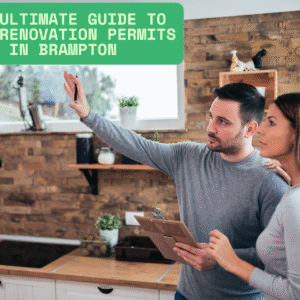When someone is buying or selling a house, one step that often brings stress or surprise is the house inspection. It is an important part of the process because it shows the real condition of the property. Many people think the house looks fine from the outside, but what lies beneath can tell a very different story. Some issues found during inspections can be minor, but others might point to serious problems that could cost a lot to fix later.
This article looks at the most common problems that come up in house inspections across Australia and what they usually mean for buyers, sellers, and homeowners.
Structural Movement
One of the biggest issues found in inspections is movement in the structure of the house. This can be seen in the form of cracks in walls, uneven floors, or doors and windows that do not open properly. In some cases, these signs point to movement in the foundations. Soil conditions, tree roots, and poor drainage often cause this type of damage.
If left untreated, this movement can lead to bigger repairs later on. In some areas like Brisbane, where weather and soil types vary, this is a fairly common problem. Inspectors usually check the slab, stumps, and footings for any signs of shifting.
Water Damage and Dampness
Water damage is another frequent issue. This can show up as stains on ceilings or walls, bubbling paint, or a musty smell. It can come from leaking pipes, blocked gutters, or poor waterproofing in wet areas like bathrooms and laundries.
Damp conditions can lead to mould growth, which can affect health. In timber homes, water damage can also attract pests like termites. It is important to check roof cavities, under floors, and around windows and plumbing.
Roofing Problems
The roof is one of the most important parts of a house, and yet it is often overlooked. House inspections often uncover broken tiles, rusted sheets, or damaged flashing. These problems can allow water to enter and cause damage inside the home.
In areas with heavy rainfall or strong winds, like parts of Queensland, roof damage is more common. Roof repairs can be expensive if the issue has spread or affected the timber frame underneath.
Termite Activity and Timber Decay
Australia has a large number of homes made from timber, and with that comes the risk of termites. A good inspector will check for signs of active termites or old damage. This might include hollow-sounding wood, mud tubes, or small holes.
Timber decay is another problem often seen during inspections. It usually occurs when timber is exposed to moisture for too long. Both issues weaken the structure and can be hard to detect without a proper check.
Plumbing Issues
Old or poorly installed plumbing can lead to many problems. Inspections often reveal leaks, blocked drains, or corroded pipes. Sometimes, issues are not visible to the eye but can be found through pressure testing or thermal scanning.
Bad plumbing can lead to higher water bills, damp walls, and even damage to floors and foundations. In older homes, original plumbing systems might need a complete update to meet current building rules.
Electrical Concerns
Electrical safety is one of the most important parts of any house inspection. Many homes still have old wiring that does not meet modern standards. Inspectors may find exposed wires, overloaded circuits, or switchboards that are not up to date.
In some cases, the power system may work fine but still pose a safety risk. This is especially true in homes built before the 1980s. These problems should be fixed by a licensed electrician before anyone moves in.
Issues with Drainage
Poor drainage is another common problem. If water does not flow away from the house properly, it can pool around the foundations. This may lead to structural problems or rising damp over time.
Inspectors often check for pooling water in the yard, blocked downpipes, or garden beds too close to the house. Fixing these problems early can save a lot of damage down the track.
House Maintenance and Building Code Gaps
Some houses simply show signs of poor maintenance. This could include flaking paint, broken fixtures, or cracked tiling. While these might seem small, they can be signs of bigger neglect.
Also, older homes might not meet current building standards. This does not always mean the house is unsafe, but it might need upgrades if major work is planned.
When Inspections Lead to Smarter Decisions
Understanding these inspection findings can help buyers make clearer choices. It is better to know what kind of repairs or upkeep a house may need rather than face surprise costs later. Sellers can also prepare better by fixing small problems before listing the property.
One often overlooked part of this process is knowing what to expect in your local area. For example, in Brisbane, many properties are built on sloped land or clay soil. This affects how the foundations behave. Booking a house inspection Brisbane before selling or buying makes more sense than relying on guesswork. Local inspectors are more familiar with the climate, materials, and typical building styles in the area. They also know what types of damage show up more often in that region.
Final Thoughts
House inspections are not something to skip or rush through. They reveal important facts about the condition of a property, many of which are not visible to the eye. Whether the home is new or old, small or large, a proper inspection helps people make better choices.
Some issues may not seem serious right away but can become bigger with time. That is why it is always better to know the full picture before signing any contracts. Buyers, sellers, and owners all benefit from a clear and careful look at what lies behind the walls, under the floor, and up on the roof.





